AW Insect Book: Sawflies, Wasps, Bees & Ants (Hymenoptera)
Posted: Thu Dec 11, 2014 10:33 am
Weaver Ant, Tailor Ant Oecophylla longinoda
Superfamily: Vespoidea. Family: Formicidae. Subfamily: Formicinae. Tribe: Oecophyllini
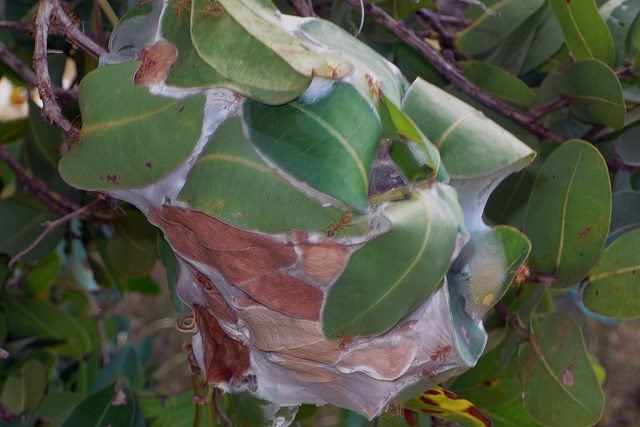 © Dewi
© Dewi
KwaZulu-Natal, Kosi Forest lodge
Description
Medium-sized (body length of workers 7-11 mm). Rust-coloured, elongated; long antenna, with the first segment red; head large; petiole scale long, gaster small.Oecophylla longinoda possesses dimorphic workers and therefore three distinct female castes, the queen, major worker, and minor worker.
These ants range from orange to dark brown in color. Erect hairs cover the surface of the gaster while a finer pubescence encompasses the rest of its body. The eyes are well developed with eyespots. The clypeus, the large shield-like plate on the front of its head, is large and convex with the outer edges overhanging the basal borders of the mandibles. It has 12-segmented antennae with the first segment of the antennae longer than the second and the third put together. Its mandibles are extended, and have triangular elongated teeth that cross one another when at rest. The thorax is very constricted in the mesonotal region. The petiole between the thorax and abdomen is thin in dorsal view, but looks low and rounded in the side view. The gaster has a visible acidopore. On the ants' feet, there are powerful suction pads called arolia, allowing this ant to maintain heavier loads than other ants. Another important characteristic of the weaver ant is the presence of the rectal gland and the sternal gland, both of which are located near the anus and are used to secrete chemicals to recruit nestmates when circumstances arise that require the attention of a group of ants.
Distribution
Forested regions of tropical Africa.
Habitat
Weaver ants are arboreal, living in heavily forested areas. The ants inhabit tree canopies in which they build nests out of living leaves. One colony may occupy several trees at one time.
Biology
The African weaver ants are primarily insectivorous, attacking and eating any ants or other insects that invade their nest. They will even attack and eat weaver ants from other colonies.
They make nests in trees made of leaves stitched together using the silk produced by their larvae.
Weaver ants build their nests from the leaves of trees, bending the leaves into place and then binding them together with silk produced by larvae. When building a new nest, ants begin by walking along the edges of leaves, occasionally pulling up on the edges to test the flexibility of the leaf. If the ant succeeds in turning up the leaf even the slightest bit, other ants join in forming chains of their bodies. By grasping the thoracic region of another ant, an ant chain long enough to extend between the ends of a leaf can be made. The ants in the chain then pull the ends of the leaves together until they are next to each other. Then other ants seal the leaves together by applying the silk from larvae that are in their final instar. Holding the larva and touching it with antennae in a certain way signals the larva to produce silk, and the ant can weave the two leaves together. It is in this last of at least three larval instars that larvae might be recruited to contribute silk to the building of nests. (This is child labor ) The larvae do not build cocoons because of the protection afforded them by the nest and because they have given up their silk for nest construction. By building nests in this way, and having an unlimited number of nests per colony, weaver ants have no spatial limitations for their colony, and so can occupy several trees at one time. With this much room, it is not uncommon for single colonies to have populations of a half million or more ants.
) The larvae do not build cocoons because of the protection afforded them by the nest and because they have given up their silk for nest construction. By building nests in this way, and having an unlimited number of nests per colony, weaver ants have no spatial limitations for their colony, and so can occupy several trees at one time. With this much room, it is not uncommon for single colonies to have populations of a half million or more ants.
Links: The Ants of Africa
Superfamily: Vespoidea. Family: Formicidae. Subfamily: Formicinae. Tribe: Oecophyllini
 © Dewi
© DewiKwaZulu-Natal, Kosi Forest lodge
Description
Medium-sized (body length of workers 7-11 mm). Rust-coloured, elongated; long antenna, with the first segment red; head large; petiole scale long, gaster small.Oecophylla longinoda possesses dimorphic workers and therefore three distinct female castes, the queen, major worker, and minor worker.
These ants range from orange to dark brown in color. Erect hairs cover the surface of the gaster while a finer pubescence encompasses the rest of its body. The eyes are well developed with eyespots. The clypeus, the large shield-like plate on the front of its head, is large and convex with the outer edges overhanging the basal borders of the mandibles. It has 12-segmented antennae with the first segment of the antennae longer than the second and the third put together. Its mandibles are extended, and have triangular elongated teeth that cross one another when at rest. The thorax is very constricted in the mesonotal region. The petiole between the thorax and abdomen is thin in dorsal view, but looks low and rounded in the side view. The gaster has a visible acidopore. On the ants' feet, there are powerful suction pads called arolia, allowing this ant to maintain heavier loads than other ants. Another important characteristic of the weaver ant is the presence of the rectal gland and the sternal gland, both of which are located near the anus and are used to secrete chemicals to recruit nestmates when circumstances arise that require the attention of a group of ants.
Distribution
Forested regions of tropical Africa.
Habitat
Weaver ants are arboreal, living in heavily forested areas. The ants inhabit tree canopies in which they build nests out of living leaves. One colony may occupy several trees at one time.
Biology
The African weaver ants are primarily insectivorous, attacking and eating any ants or other insects that invade their nest. They will even attack and eat weaver ants from other colonies.
They make nests in trees made of leaves stitched together using the silk produced by their larvae.
Weaver ants build their nests from the leaves of trees, bending the leaves into place and then binding them together with silk produced by larvae. When building a new nest, ants begin by walking along the edges of leaves, occasionally pulling up on the edges to test the flexibility of the leaf. If the ant succeeds in turning up the leaf even the slightest bit, other ants join in forming chains of their bodies. By grasping the thoracic region of another ant, an ant chain long enough to extend between the ends of a leaf can be made. The ants in the chain then pull the ends of the leaves together until they are next to each other. Then other ants seal the leaves together by applying the silk from larvae that are in their final instar. Holding the larva and touching it with antennae in a certain way signals the larva to produce silk, and the ant can weave the two leaves together. It is in this last of at least three larval instars that larvae might be recruited to contribute silk to the building of nests. (This is child labor
Links: The Ants of Africa
 © BluTuna
© BluTuna © BluTuna
© BluTuna © BluTuna
© BluTuna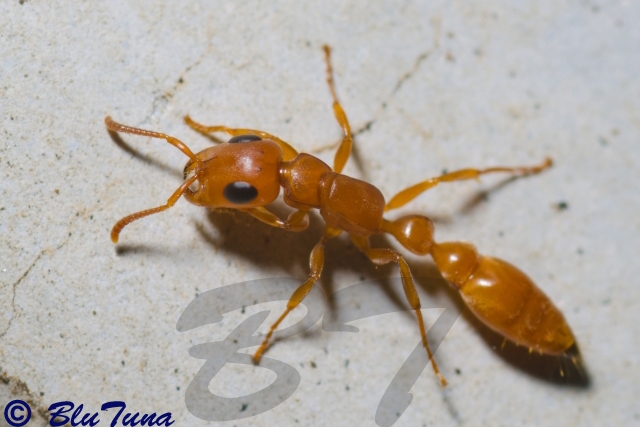 © BluTuna
© BluTuna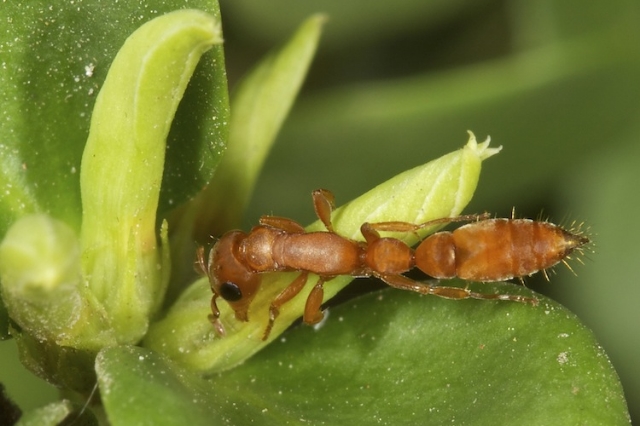 © ExFmem
© ExFmem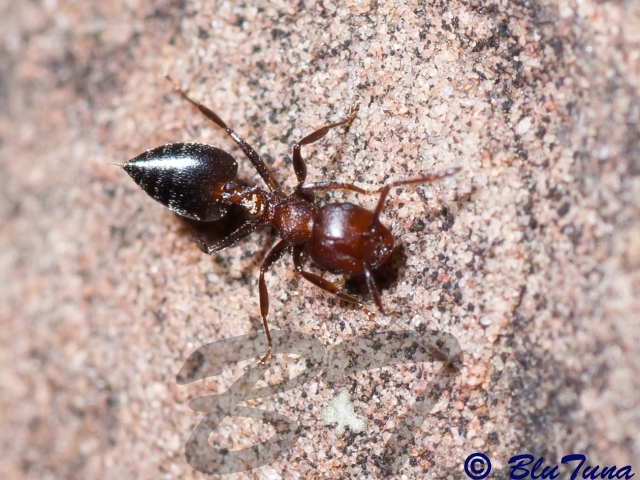 © BluTuna
© BluTuna © Toko
© Toko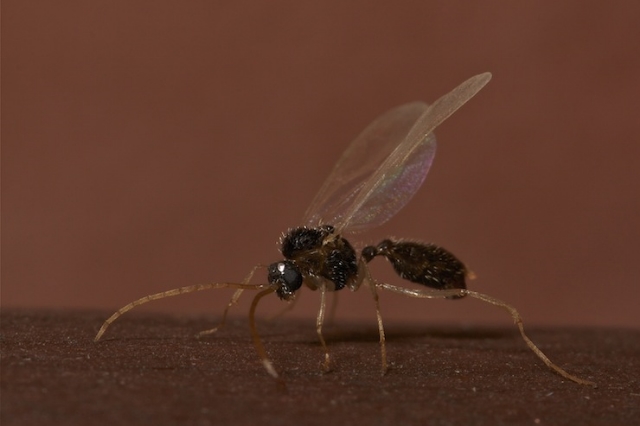 © ExFmem
© ExFmem © ExFmem
© ExFmem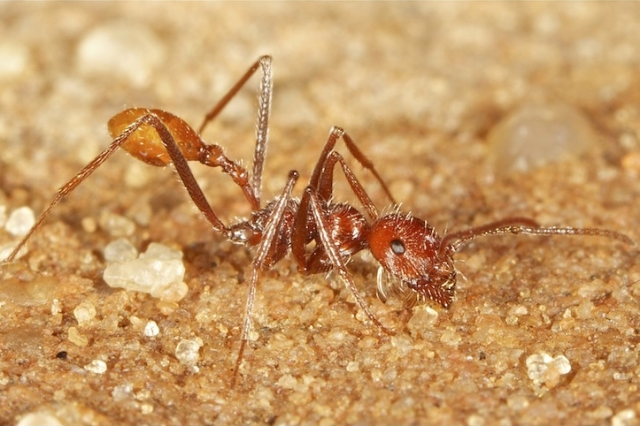 © ExFmem
© ExFmem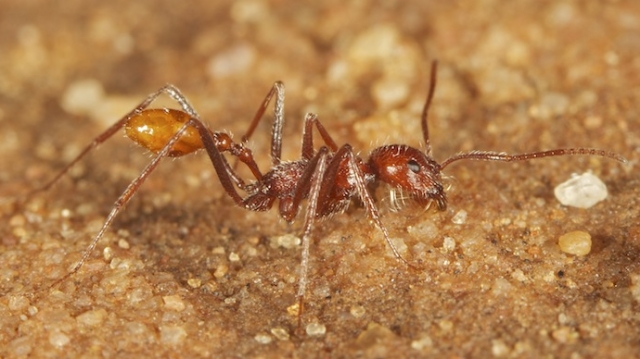 © ExFmem
© ExFmem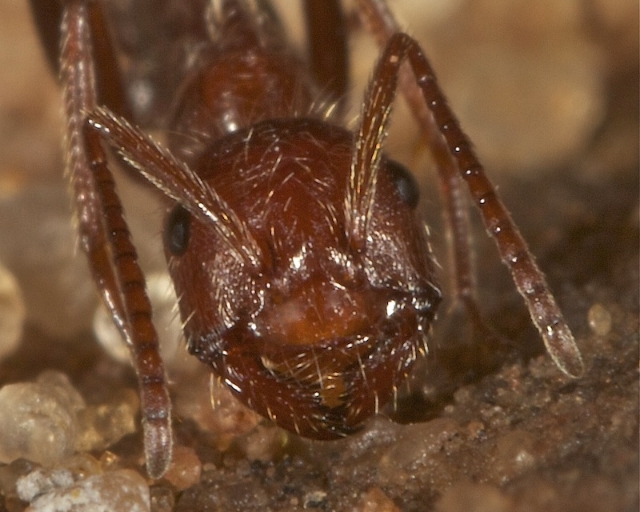 © ExFmem
© ExFmem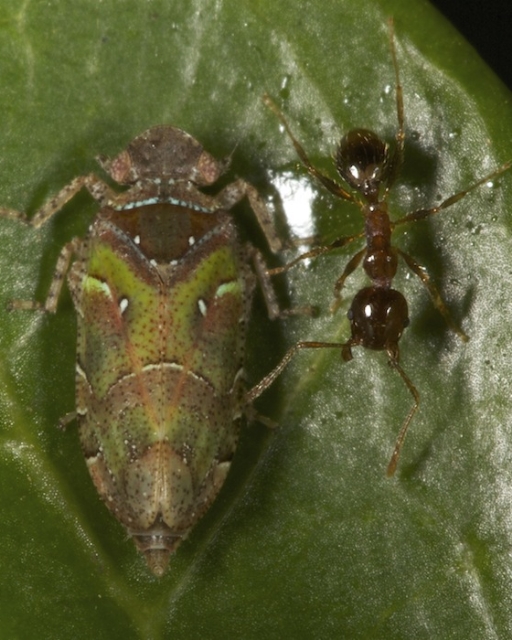 © ExFmem
© ExFmem